In the early hours of a Saturday morning in 2011, Matt Stock, a 50 year-old environmental engineer, passed out on the bathroom floor of his Queens home after overdosing on a particularly lethal mix of narcotics.Stock waited until his wife and children were asleep before getting high, and by the time the babysitter found him when she arrived for work, his life was hanging in the balance.
Some 100 Americans die every day from drug overdose. According to the Center for Disease Control, drug abuse is now the leading cause of fatalities in the U.S., surpassing death from car accidents, heart attacks and cancer. And with only one in 10 addicts getting the urgent intervention needed, the number is rising.
Stock was one of the lucky ones. He survived. The owner of a successful company, married with children, he didn’t fit the profile of an addict, but the disease—which is genetic in at least 50 percent of cases—can lurk and linger where it is least expected. At first, his use of drugs, he says, was recreational.
“I can stop tomorrow. I will stop tomorrow, I kept deluding myself,” he recalled. The self-delusion is almost universal during active addiction. Stock’s use of drugs quickly spiraled out of control. By the time he overdosed, he says, “I was doing cocaine, prescription pain pills, heroin. I would experiment with any drug I could get my hands on, morning to night,” until he took his dive into “the garbage can”—a term used by addicts who take just about any drug in any form and combination.
In retrospect, the red flags were there: as a child, Stock began collecting comic books, cards and other stuff, compulsively—a way of coping, say professionals, with unresolved inner turmoil. Today, this is recognized as a sign of addictive behavior. Stock’s nascent disease was triggered in 1997 when his marriage failed. That’s when he headed off to Vegas and started gambling, a hobby that quickly grew into an obsession, then an addiction, lasting about 12 years. “Finally, I got a hold of myself and stopped, cold turkey, in 2009. No program; just stopped.” The vicious cycle began again during a visit to Atlantic City when someone offered him cocaine.
THE STRUGGLE
After a long hospitalization, Stock arrived at the Caron Treatment Center in Pennsylvania “a mess.” Depressed, weak, zombie-like, he was in no mood to meet the rabbi on staff who reached out to him. He had little interest in things Jewish; Judaism, he felt, was irrelevant to him. So he let the rabbi speak hoping he’d be left alone.
But soon enough, he accepted an invite to Shabbat dinner, an antidote to the reclusive behavior typical of addicts.
“Addiction is about isolation—from themselves, from the people around them, from spirituality. Shabbat is the exact opposite,” said Caron’s resident rabbi, Rabbi Yosef Lipsker, from Reading, PA.
Today, as the prevalence of addiction is acknowledged within Jewish communities where denial once made getting help difficult, Jewish recovery programs have opened nationwide, and general rehab centers recruit trained rabbis to their professional staff, providing a religious component to their program. Built upon a particularly Jewish and spiritual sensibility that aligns well with the traditional 12-step program, it seems an almost intuitive relationship.
“Spirituality encourages a sense of connectedness and being of service to others,” says David Roppo, an Addiction Freedom Coach. “In many regards, the choice of addictive behavior is a falling from spirit, in the sense that addictive behavior is of a self-centered, self-serving attitude.”
Creating a community, bonding with someone who can serve as a support, and connecting to a higher source is integral to the recovery process, say experts, and making that available to the recovering community is at the center of Chabad recovery programs.
Rabbi Meir Kessler, Director of the Jewish Recovery Center in Boca Raton, Florida—“the epicenter of the country’s largest and most vibrant recovery community,” according The New York Times—explains that addicts don’t recover.
“You are in the process forever.” Not for the faint-of-heart, it is, he insists, a long, arduous process that demands commitment and a willingness to accept help and support from others.
Gaby Protell found herself at the Boca Raton treatment center after more than ten years of addiction. Like other addicts, Protell determined that she could break the habit on her own. It took many setbacks until, she came “to the realization that I cannot do it alone.” Only then did she make the decision to admit herself to the treatment center—a critical if humbling first step towards recovery, says Kessler.
Addicted to opium and dependent on other substances, Protell works on finding her spiritual center, and developing her relationship with G-d. That process, and bonding with the Chabad representatives, she feels, are crucial to her recovery. She also struggles to find forgiveness for all the pain she caused to herself, her family and friends.
“You do so much damage, you cause so much pain to people you love, it just does not disappear in a minute. I caused so many people pain, I have a lot of shame and guilt.”
Protell relies on the broader community, especially the Kesslers. “If I have a problem, if I really need someone, I go to Rabbi Kessler. I know that I am not alone.” While out of treatment, she remains in Florida so that she can be near “her family”—her extended recovery community, spend Shabbat with Chabad and participate at the weekly AA meetings. As important, she says, is her weekly visit with Rabbi Kessler.
Working in recovery comes with its own occupational hazards. It is easy to get dragged down by exposure to frequent bad news. “Every month or two there is a death in the community,” says Kessler. “A precious girl, boy, man or woman loses their life. It is a shame because it did not have to end this way,” says Kessler.
Survivor relapse can also be terribly demoralizing. “To see someone else go through that, through all the pain, incapable of grasping what they are doing—it hurts,” says Protell. But when that happens, she moves on, accepting, as the rabbi taught her, “that ultimately, we cannot change others. One can only change oneself.”
Rabbi Kessler makes a point of participating at family life-cycle celebrations of people in the recovery community. “There is no greater joy than participating in the wedding of a young man or woman whose life almost ended before it ever got started,” says Kessler. The center has an annual retreat, giving recovering addicts and their families an opportunity to celebrate living a sober life, an opportunity to inspire and be inspired through a shared struggle and experience.
SPIRITUAL RECOVERY
In 1972, well before professionals were aware of the spiritual component in successful recovery, when shame and denial, especially within the Jewish community made many sweep the problem under the rug, the Chabad Residential Treatment Center in Los Angeles opened. A non-sectarian comprehensive recovery center for men with a 65-person capacity, 38 in primary care and 25 in sober living after care, it has to date, treated some 5000 patients.
“We work on healing their underlying issues that led to their addictions, such as self-esteem, family relationships, past traumas. We teach mood management and coping skills, and we incorporate spiritual and Torah principles into their lives,” says Donna Miller, a licensed marriage and family therapist who directs the treatment center. As well, she says, the program gives recovering addicts the opportunity to participate in religious classes, and benefit from counseling by the rabbinical staff.
Today, religion and spirituality are recognized as integral to mental health and addiction treatment. The California Mental Health and Spirituality Initiative was established in June 2008 at the California Institute for Mental Health to advocate for the “inclusion of spirituality as a potential resource in mental health recovery and wellness.”
Arguably the most prominent voice in Jewish recovery is Dr. Abraham Twerski M.D., medical director of Gateway Rehabilitation Center, a pioneer who raised awareness about denial in the Jewish community, and wrote prolifically on the connection between spirituality and recovery. In Addictive Thinking, he says that “While some may benefit from Antabuse or other drugs that break the craving, these substances alone cannot solidify recovery. The essence of recovery comes down to changing your personality,” a process similar to teshuvah, the path of returning to G-d.
Culturally specific recovery programs are often critical components of successful recovery. Nan Franks, CEO of the Alcoholism Council of Cincinnati Area points to research like “So Help Me G-d: Substance Abuse, Religion and Spirituality,” the two-year study by the National Center on Addiction and Substance Abuse at Columbia University that documents the efficacy of a program that integrates G-d, religion and spirituality with science and medicine in treating substance abuse and addiction.
“Religion and spirituality can be important, sometimes determinative companions to the treatment and recovery process. Many recovering alcoholics and addicts attribute their motivation to seek treatment and their ability to maintain sobriety to their religious beliefs and the support of a community of believers,” says Franks.
In the Los Angeles center, similar to the work of the Chabad recovering centers across North America, Chasidic teachings are used to “help addicts separate the wounds from their past, connect with their essence, and re-embrace a connection with their roots,” says Miller, who explains that the Lubavitcher Rebbe, Rabbi Menachem Mendel Schneerson’s teachings are a part and parcel of what they do.
“The Rebbe’s teachings on building from strengths, phrasing things in the most positive way possible, and finding true purpose and meaning in life, influence all of my work as a therapist and the development of the program here.”
LIFELONG JOURNEY
Back in New York, Stock, who is now sober for two years, concedes that “at one point I went to a rehab program in New York that de-emphasized spirituality. It didn’t work for me.”
His journey was not smooth, and after three months dry, he relapsed. Stock cut ties with most of his friends “besides the ones that were very accepting and supportive of the process.”
Today, he shares his story and admits that it is not over. Long after his initial recovery, he must continue the battle to stay sober, and takes nothing for granted: after long periods when the most he could manage were a few hours of work a day before heading out for drinks, he is grateful, he says, that he is holding his own, working full days without depending on alcohol.
He speaks regularly with his rabbi. He visits the Chabad Israel Center on the Upper East Side of New York City for prayer services several times a week, and participates at a study class twice a week with a Chabad rabbi. His connection to Judaism carries him through his day-to-day struggle. “Before I met Rabbi Lipsker, my Judaism was dormant and now it is an integral part of my life.”
Sober but realistic, Matt Stock applies what he learns about the biblical figures and their struggles, “and how they overcame them,” to his own life. “They teach me that I too can overcome my own constant struggles.”
Miriam Karp and Dovid Zaklikowski reported for this story.
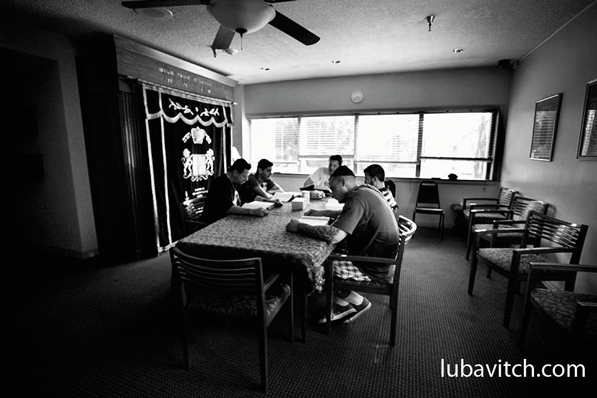
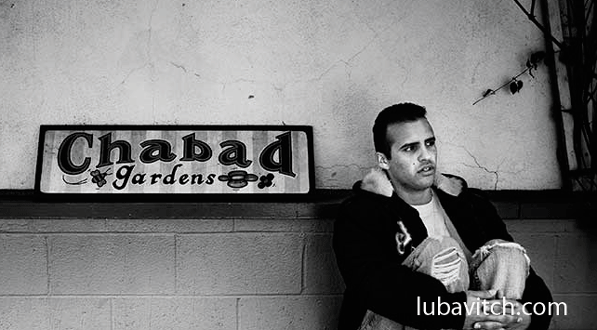


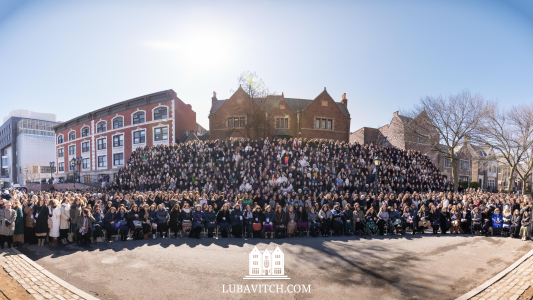
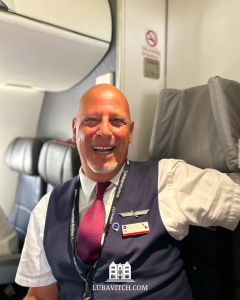



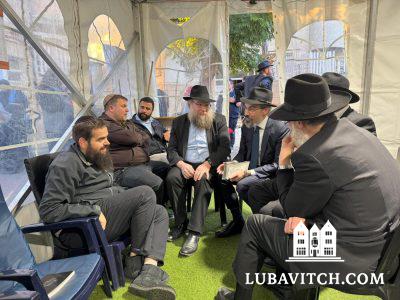

Be the first to write a comment.